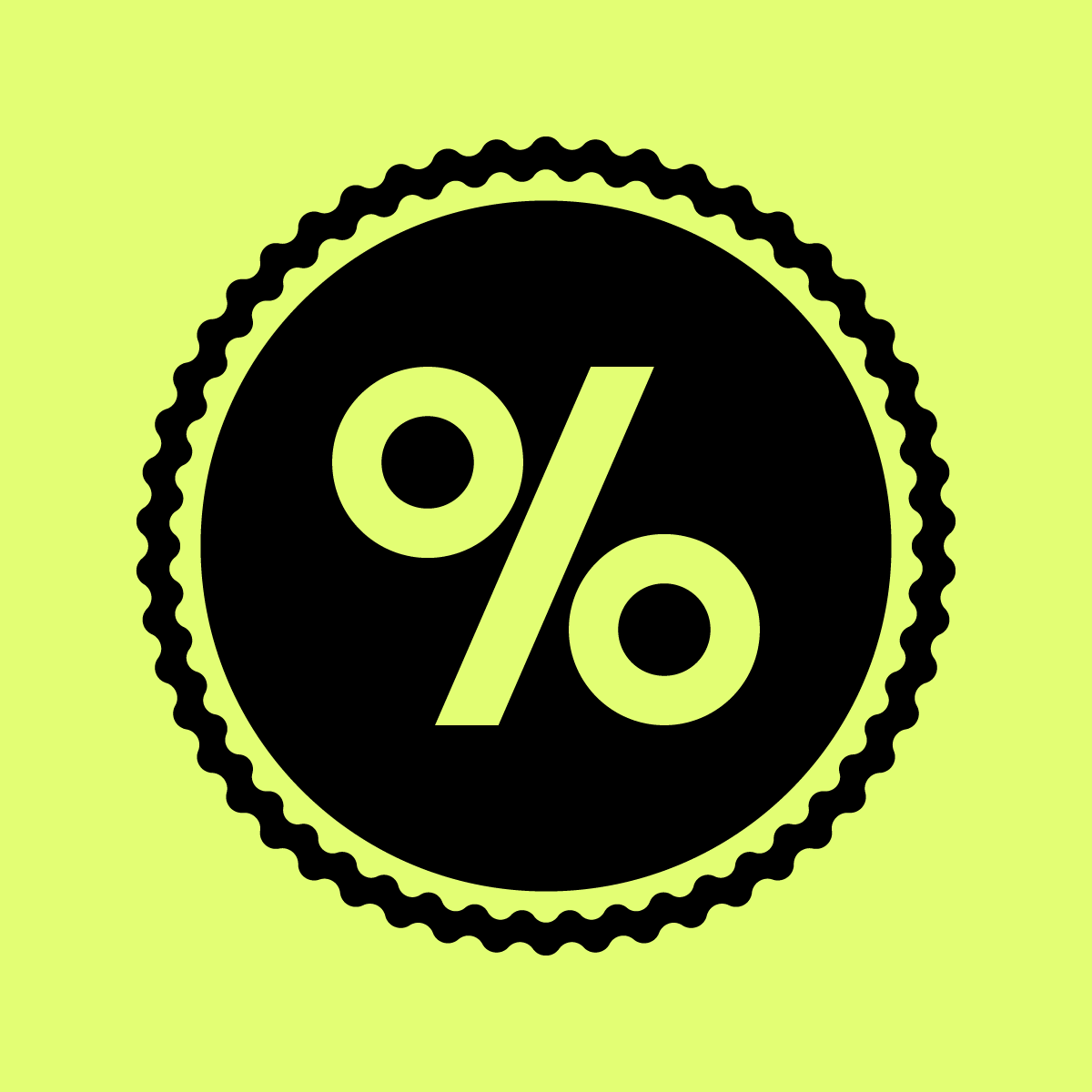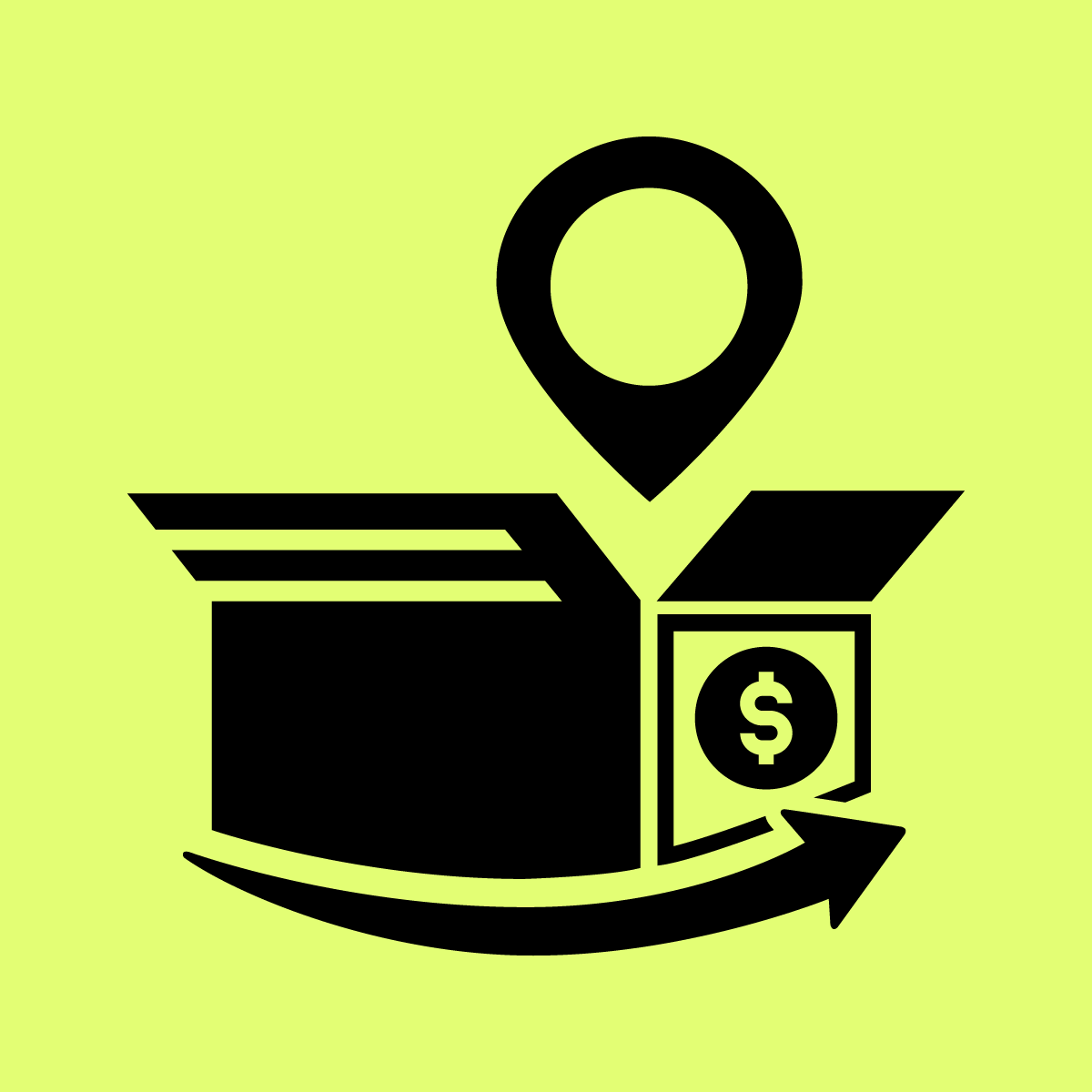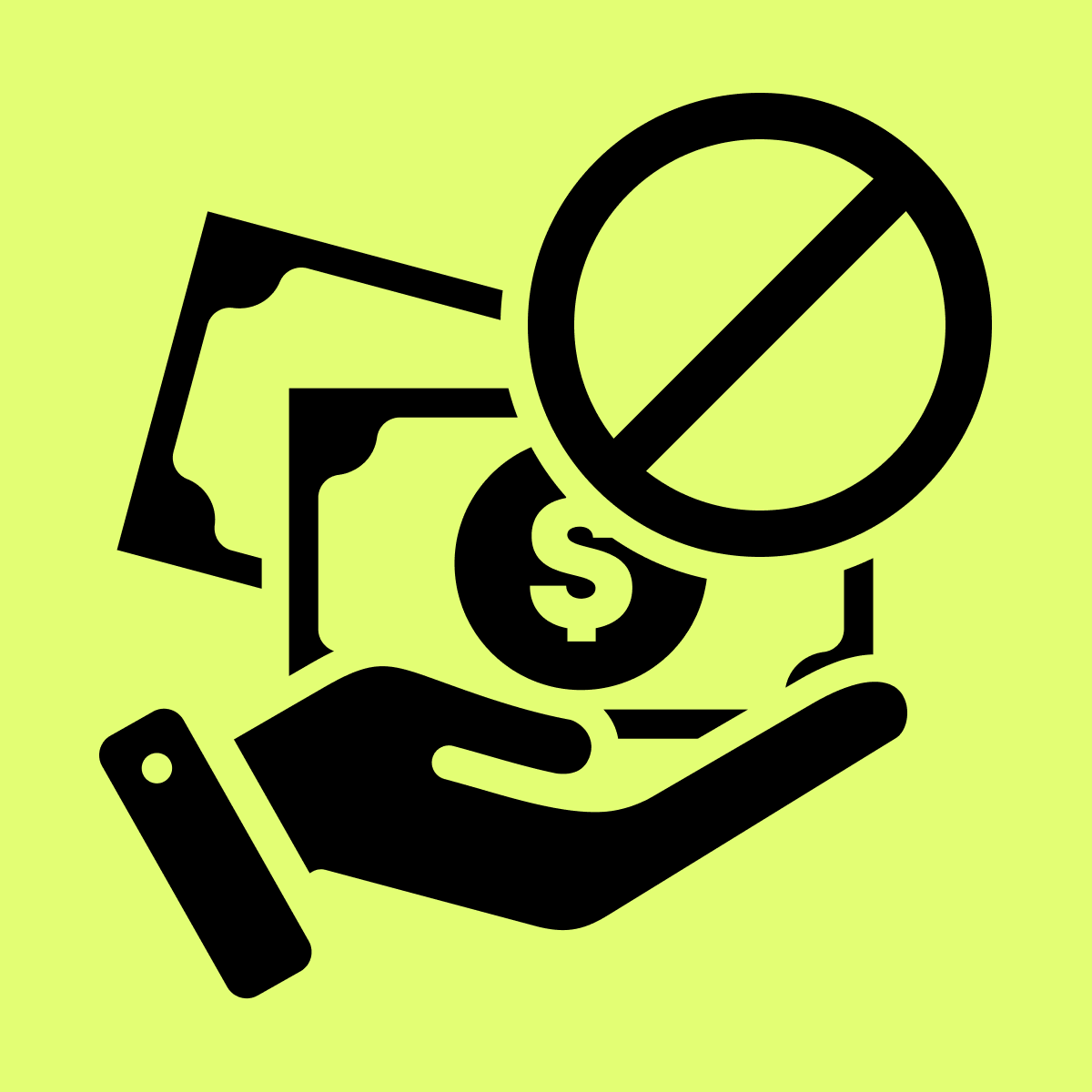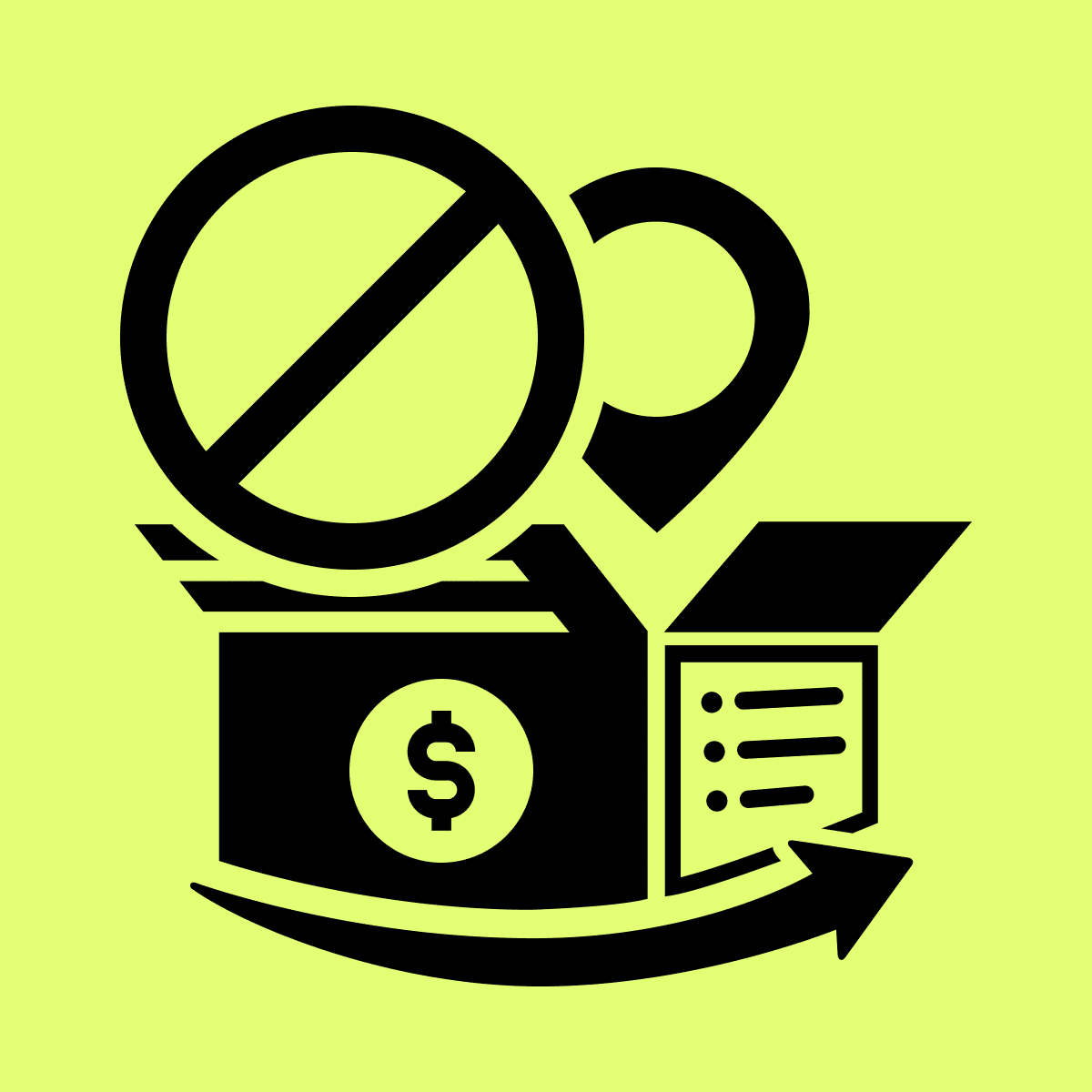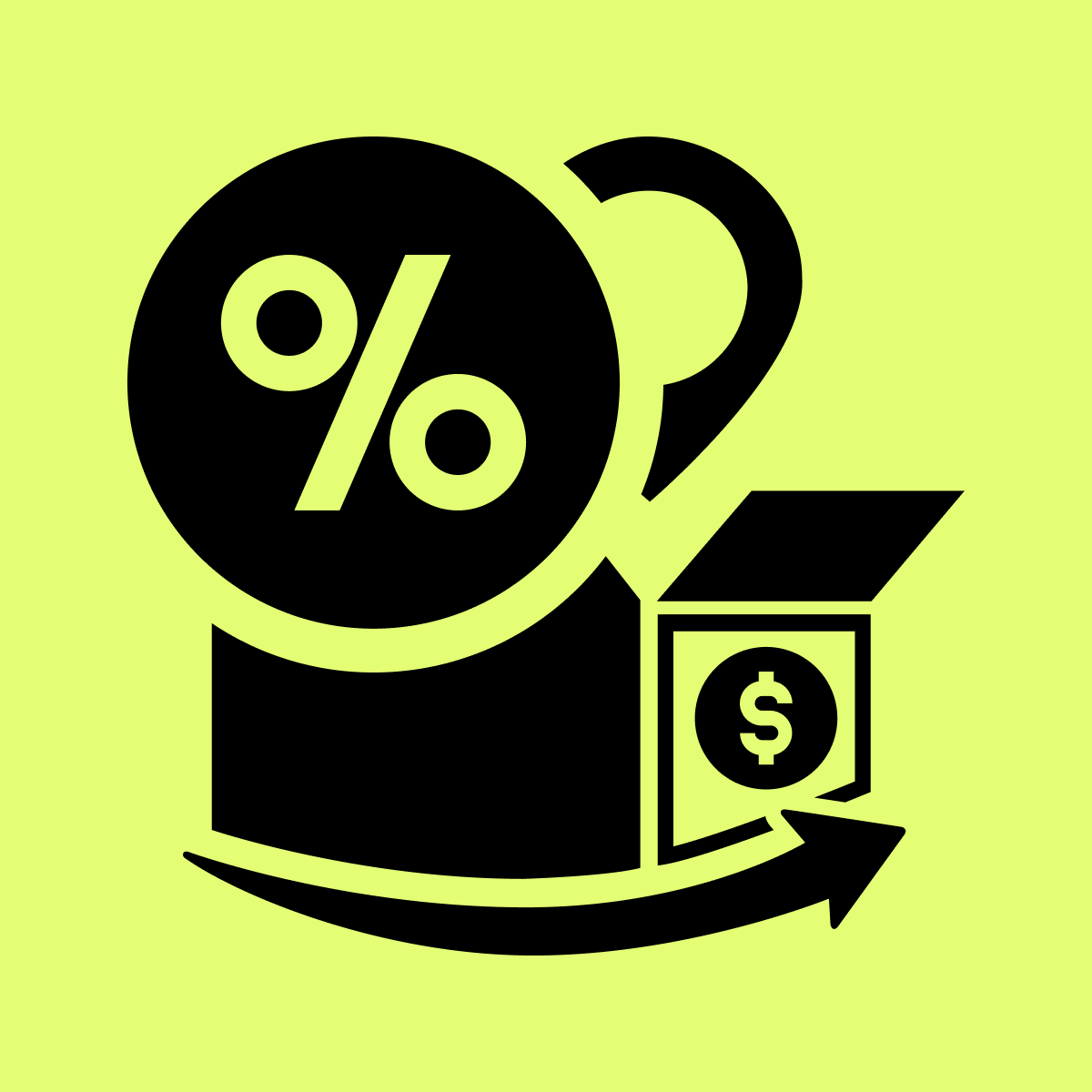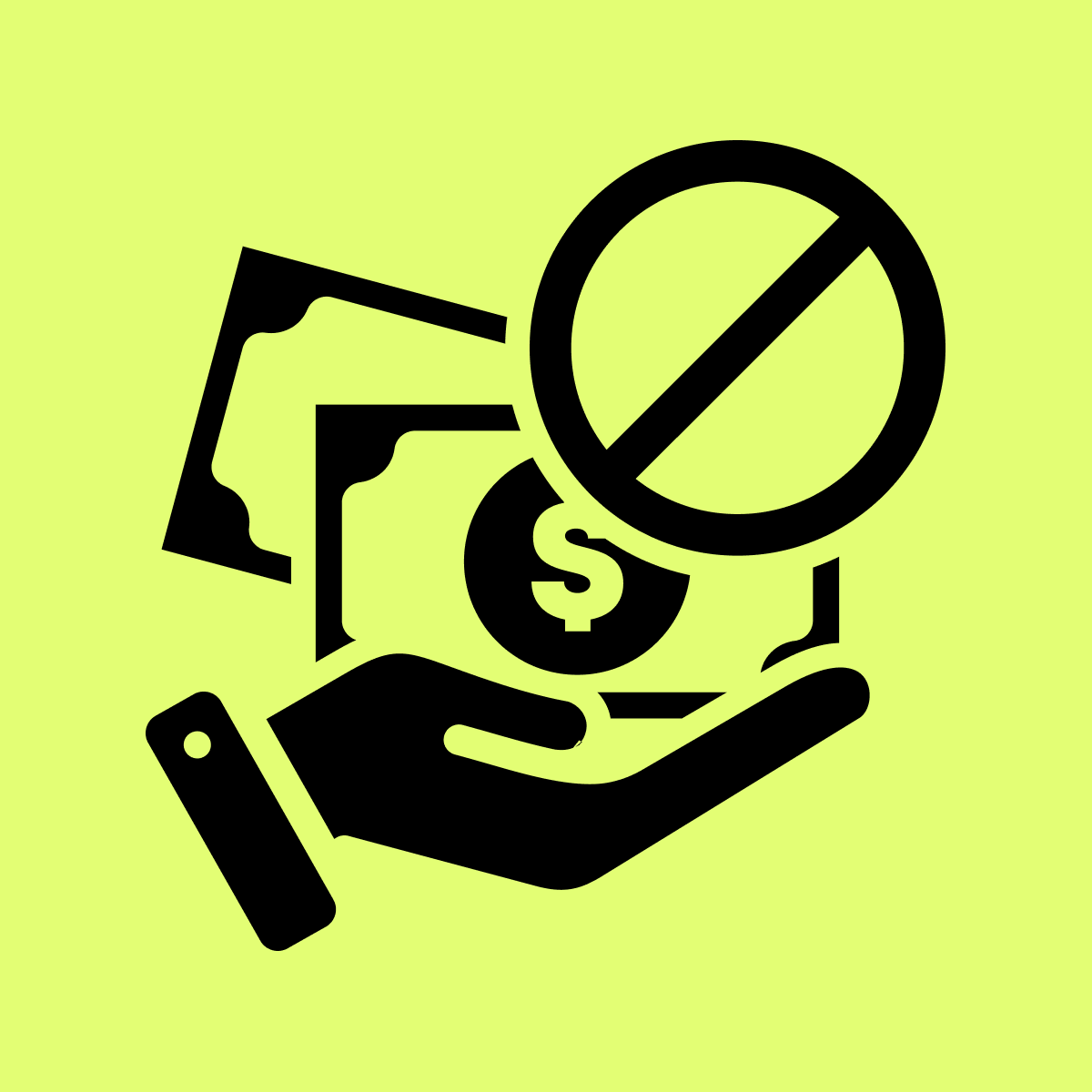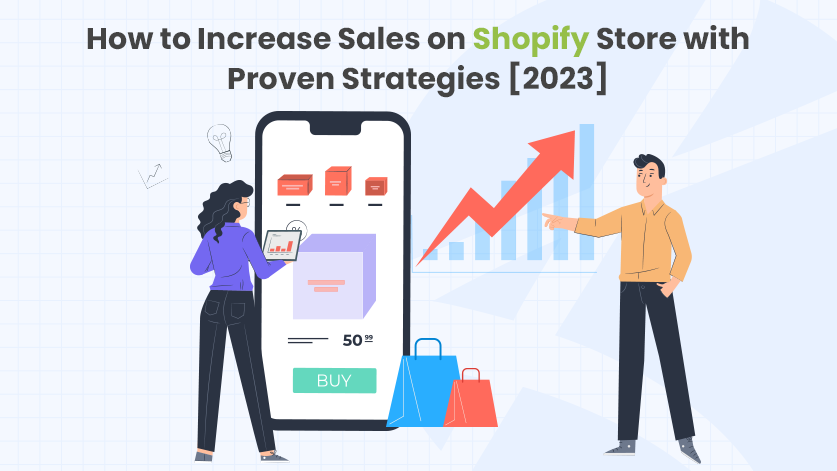You’ve spent hours perfecting your online store. However, there’s one crucial question on your mind: how to increase sales on Shopify?
Don’t worry; you’re not alone. Generating Shopify sales is one of the biggest challenges for new Shopify store owners.
The eCommerce industry is booming, and Shopify is one of the platforms. It is the perfect platform for entrepreneurs who want to build their online store in Shopify. It is easy to use, has a wide range of features, and it’s very flexible.
Shopify enables you to sell an unlimited range of products, and after the pandemic, online shopping has!
How Many People Shop Online in the Future?
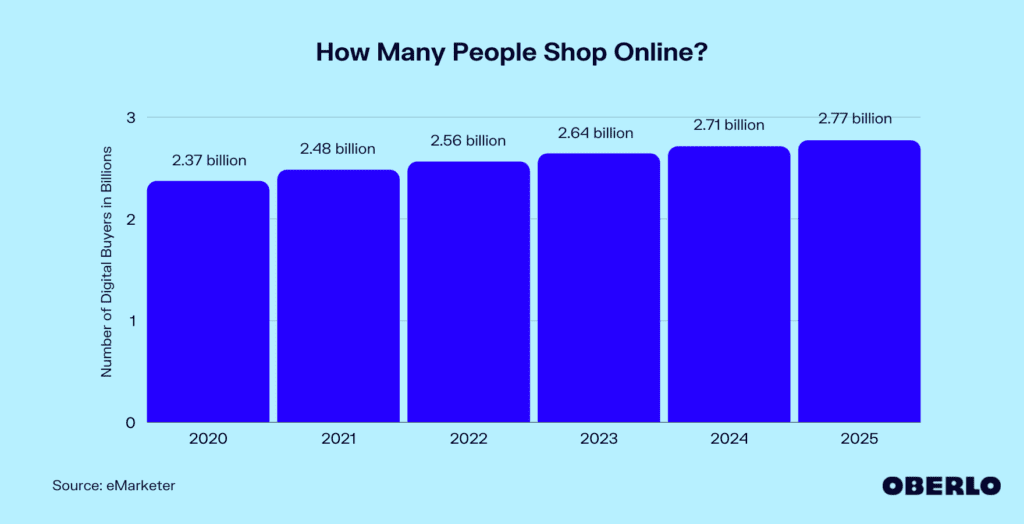
By 2023, the number of online shoppers will increase globally, with 2.64 billion online shoppers worldwide. This means 33.3% of the world’s population. In other words, one out of every three people you see around you is an online shopper.
According to recent studies, online shoppers are set to continue increasing, rising to 2.71 billion in 2024 and 2.77 billion in 2025.
How Many People are Shopping in the USA?
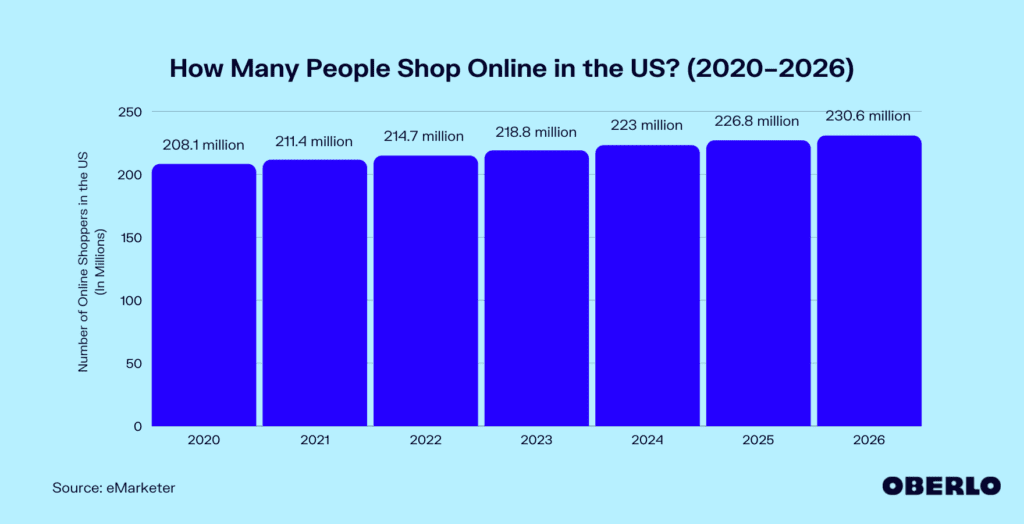
As per the latest data, the number of online shoppers in the US has been increasing year after year. In 2023, analysts expect there to be 218.8 million digital buyers there. This marks a 1.9% annual increase from the previous year.
If you have a Shopify store or are thinking of setting one up, you need to read this post! We’ll discuss how to increase your sales on your Shopify store in 2024.
7 Reasons Why You May Be Getting Traffic But No Shopify Sales
It can be very frustrating when running an online shop with a lot of website traffic but no sales.
If this happens to your eCommerce store, there could be several possible reasons why it’s occurring. Here we will discuss 7 potential factors that may explain why you have high visitor numbers but still no sales in your Shopify store:
- Poor Pricing Strategy
- Lack Of Quality Product Images
- Unclear Explanations for Shipping and Returns
- Slow-loading Pages
- Not Optimized Checkout Process
- Outdated Website Design
- Advertising without Specific Targeting
Let’s take a deep look!
1. Poor Pricing Strategy:
If your prices aren’t as low as those of other eCommerce stores, it can hurt the value and appeal of what you sell. If you charge too much for your products, you may lose customers quickly because someone else probably sells something similar for less somewhere else and has more competitive pricing models.
It’s always a good idea to check out your competitors’ sites first.
2. Lack of Quality Product Images:
Boost customer confidence by showcasing the quality of your products through compelling images. Without visual proof, potential buyers may hesitate to invest in items that are located far away and not tangible, so ensure each product listing includes excellent images.
3. Unclear Explanations for Shipping and Returns:
Uncertain or complicated shipping and return policies can be a major turnoff for potential customers, causing them to leave their carts. Customers may be unsure about their purchase and decide not to proceed if shipping information is not readily available or the return policy is unclear.
4. Slow-loading Pages:
When pages take a long time to load, visitors have time to get bored or lose interest, which means that some will leave before seeing the full content that can be seen within seconds.
Aim for faster speeds by using optimization of your Shopify store like compressing images, etc., and scaling down larger ones when necessary.
5. Not Optimized Checkout Process:
Customers may abandon their carts at checkout if the payment process is slow due to the required fields taking too long to load. To prevent this, it’s important to keep the checkout process as simple and easy as possible by streamlining the user interface design to improve the speed of the payment process.
6. Outdated Website Design:
Don’t allow users to hesitate to choose your website by making them distrustful of outdated ones right from the landing page.
Finally, avoid using outdated, stuck-in-the-past layouts; choose more contemporary ones, round off descriptions, etc., while preserving a classic style that complements a certain business orientation since this always influences visitors’ decisions favorably as soon as they set foot on a site.
7. Advertising without Specific Targeting:
Reaching beyond just target audiences becomes ineffective because there often isn’t enough demand from untargeted sources, which results in expenditure costs greater than profits.
It is especially true because the segmentation process used to set up campaigns within different Ads networks, such as Google & Facebook platforms, limits the number of conversion opportunities.
26 Actionable Strategies & Tips on How to Increase Your Sales in Shopify Stores:
Every small business needs a web presence in today’s digital world. With the right tools, resources, and strategies, it can be easier than ever to have a steady stream of customers who trust you and come back to you again and again.
1. Analyze your Site Visitors:
You first need to get a good understanding of all the visitors who visit your site. It is important to know which pages people visit the most so that you can focus more on them when you are creating marketing plans or offers.
Use analytics products such as Google Analytics to track user activity across different platforms and devices, including where they come from before seeing your page (organic, direct, referral, etc.).
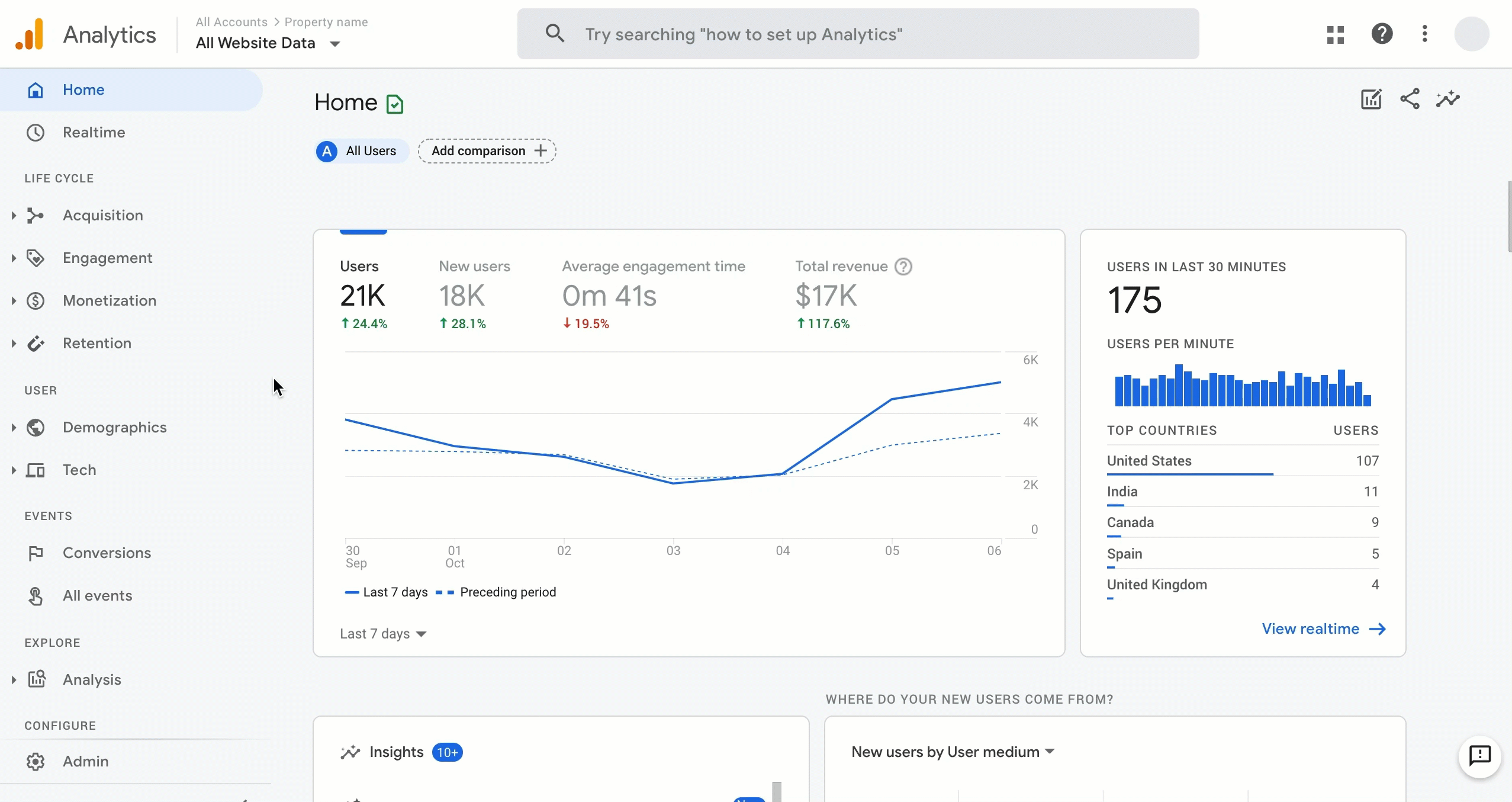
2. Make use of SEO Practices:
SEO stands for “Search Engine Optimization”, which helps search engines recognize particular words related to web pages.
eCommerce SEO can be a good strategy for your store, as you want customers who search for keywords like “Shopify success rate” to be directed directly to pages that show those items for sale, along with additional options as a bonus.
44% of people start their online shopping journey with a Google search (nChannel).
Do some research into descriptive terms that apply to items available in your shop, then ensure each item has accurate keywords associated with its description, title, and tags.
It will significantly improve visibility amongst organic searches, leading people directly toward top-selling items within moments!
3. Utilize Social Media Platforms:
By using social media for online stores to reach a larger audience, retailers can keep more eyes on their stock, constantly updated with the newest additions and featured packages and bundles, making more appealing deals.
It takes a lot of work; you need to post regularly and time them for when people are most likely to be online. It is the best way to take advantage of opportunities when subscribers are ready and waiting for content.
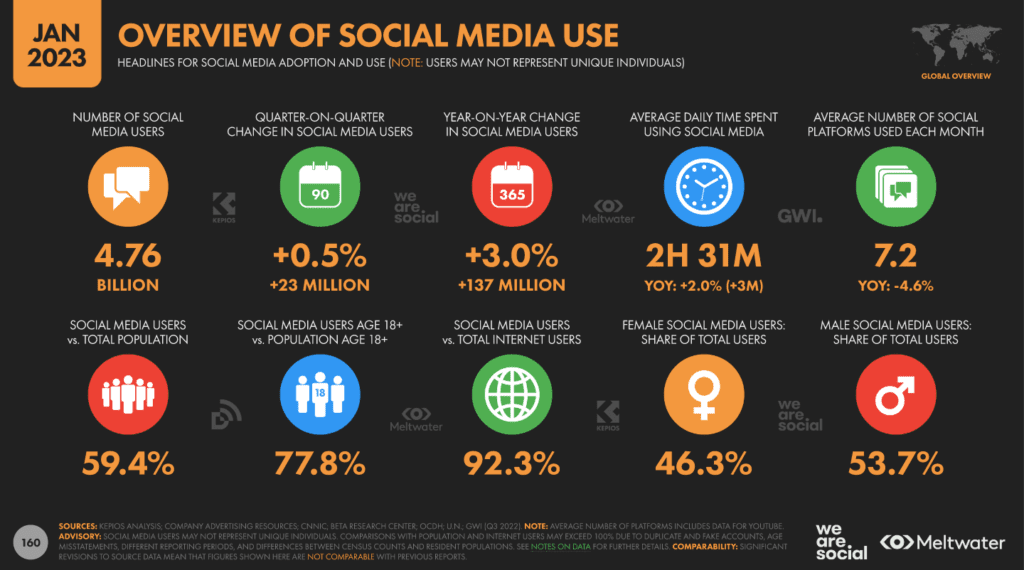
4. Adapt a Multichannel Delivery System:
You must be where your customers are to stay ahead of the competition. That means you should sell your goods through as many channels as possible. Setting up a multichannel delivery system for your Shopify store is one of the best ways to do this.
You can talk to your customers in person, online, and through mobile apps, among other ways.
It will not only help you make more money, but it will also help you get to know your customers better. They’ll like how easy it is for them, and they’ll be more likely to buy from you again.
5. Increasing Sales Through Affiliate Marketing:
Increasing sales through affiliate marketing can be a game-changer. But how does affiliate marketing assist in growing your business?
Here are some tips:
- Find the right affiliates: Look for affiliates who have a similar target audience as your business. This will ensure that the people they reach are more likely to be interested in your products or services.
- Offer attractive commissions: Motivate your affiliates by offering them a commission that’s worth their time and effort. This will encourage them to promote your products or services more aggressively.
- Provide high-quality marketing materials: Give your affiliates the tools they need to promote your products effectively. This includes high-quality product images, banners, and copy.
- Track your results: Keep track of your sales and conversions so you can see what’s working and what’s not. Use this information to adjust your affiliate marketing strategy accordingly.
By implementing these tips, you can take your affiliate marketing efforts to the next level and increase your sales like never before! So, what are you waiting for? Start your affiliate marketing journey today and watch your sales soar!
6. Introduce the Dropshipping Model:
The dropshipping model is very versatile and can be applied to various businesses. For those unfamiliar with the term, dropshipping is a business model in which eCommerce entrepreneurs sell products without having to carry any inventory.
When a store owner receives an order from a customer, they simply contact the supplier, who will ship the products directly to the customer’s door.
Dropshipping is a great way to start an eCommerce business with less investment, and it’s also perfect for those who want to test out multiple products before committing to carrying inventory. Apart from that, the Shopify dropshipping apps could save time and money for dropshippers by automating most tasks, from product sourcing to shipping.
7. Provide Multiple Discounts:
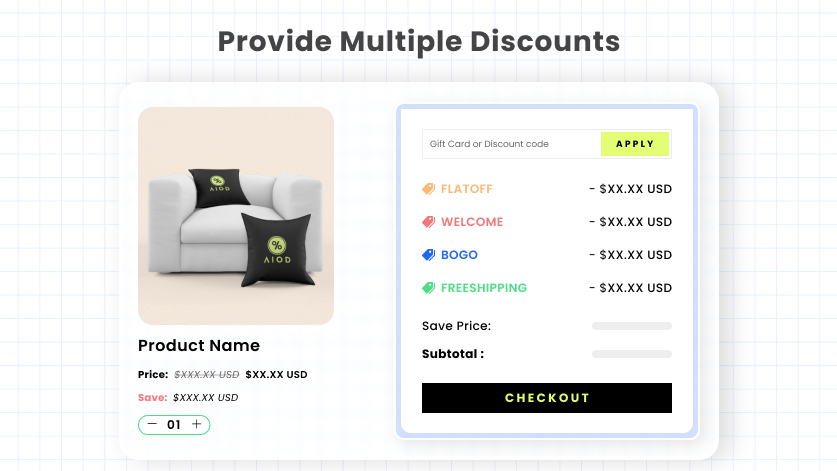
Customers are always interested in discounts. Some people are loyal to brands that offer discounts, and others only make purchases when they know they’re getting a good deal. You can provide discounts in several ways on your Shopify store.
For example: You can create automatic discounts, offer coupons, or have sales.
If you want to offer multiple automatic discounts on Shopify, there are a few things you need to keep in mind.
- First, you must ensure that your discounts don’t conflict.
For example, you can’t have a discount of 10% off and another discount of 20% off. - Second, you must ensure that your discounts are valid for the products you want to promote.
- And last, you need to set an expiration date for your discounts.
8. Increase Conversion Rate Using Retargeting Ads:
If you have a Shopify store, you know that generating Shopify sales can be challenging. But you can do a few things to increase your Shopify sales. One of those things is to use retargeting ads.
Retargeting ads are a great way to increase your conversion rate because they allow you to reach people who have already shown an interest in your product.
They’ve visited your site before, so they’re more likely to be interested in what you’re selling.
There are a few different ways you can use retargeting ads to increase Shopify sales on your store.
You can create a retargeting campaign in Google Ads, Facebook Ads, or any other ad platform that allows you to target people who have visited your site.
9. Utilize Eye-Catching Product Images:
Attractive product images can make all the difference in increasing sales in your Shopify store. Ensure the images highlight features and benefits potential customers may be interested in.
Additionally, high-quality imagery reassures buyers about their purchase decision by providing an accurate view of what they’re buying before clicking the “Add to Cart” button, so they know what they are getting into.
10. Generate Repeat Customers from Discount Codes:
Giving your customers a discount for making a repeat purchase is a great way to encourage them to return to your store. You can create discount codes that can be applied to future orders or offer a percentage off their next purchase.
There are several ways to set up repeat customer discount codes in Shopify, so explore what would work best for your store.
In addition to generating repeat customers, discount codes can also help you track the effectiveness of your marketing campaigns.
If you send a discount code to your email list and see a spike in sales, you’ll know that your campaign was successful. You can also use discount codes to track where your customers are coming from.
For example, if you offer a discount code to customers who purchase through Facebook ads, you’ll be able to track how many Shopify sales come through that channel.
11. Develop Innovative Guerrilla Marketing Tactics:
In this highly competitive eCommerce landscape, you need to get creative with your marketing to stand out from the crowd and increase sales in your Shopify store.
Guerrilla marketing is a great way to do this. It’s all about being creative and thinking outside the box to get your message across in a way that will grab people’s attention.
There are many different ways you can execute guerrilla marketing, and the best approach will vary depending on your products, target market, and budget.
But some great ideas include creating unique and eye-catching storefront displays, handing out free samples in high-traffic areas, and holding fun and interactive contests or giveaways.
Whatever tactics you decide to use, ensure they align with your brand and your overall marketing strategy. Guerrilla marketing is all about being different and unique.
12. Use Scarcity Tactics:
Let potential customers know that your products are in high demand and that they need to act fast to avoid missing out. You can do this by displaying countdown timers on your product pages or showing low stock levels.
It will create a sense of urgency and encourage potential customers to purchase.
13. Explore Different Advertising Options:
There are many options available when it comes to advertising your Shopify store. You can use Google Ads, Facebook Ads, and Instagram Ads to reach potential customers looking for products like yours.
You can also use retargeting ads to reach people who have already visited your store but didn’t purchase.
Experiment with advertising strategies and see which ones work best for your business.
You may need to invest some money in advertising, but it will be worth it if it means increasing Shopify sales.
14. Adapt Creative Design Elements:
Product images, videos, and graphics are some of your Shopify storefront’s most important design elements. They must be of high quality and attract customers’ attention to persuade them to buy your products.
Include calls-to-action (CTAs) in your product images and videos by adding text overlays or using image editing software to manipulate the images themselves.
For example, you can add a “sale” stamp to images of one of your products.
Graphic design elements like fonts, colors, and even your Shopify theme can be adapted to be more sales-driven. Make sure your fonts are easy to read and your color scheme is easy on the eyes.
Additionally, consider using the best Shopify themes that are designed for conversion optimization.
15. Accept Alternative Payment Methods:
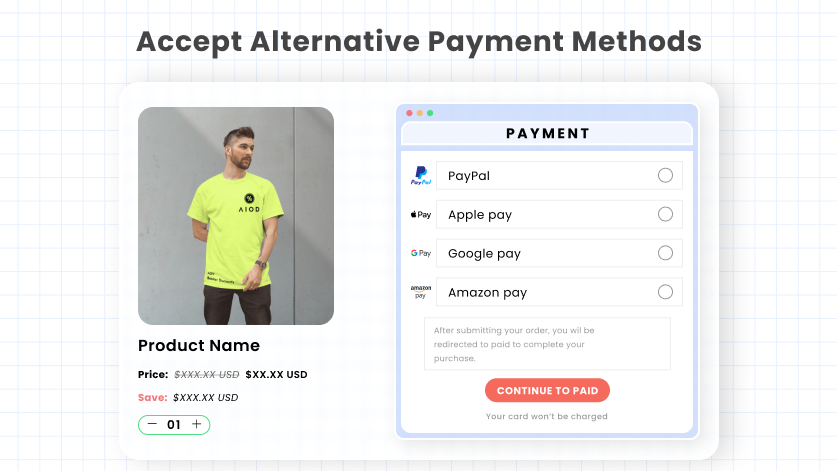
If you’re looking for ways to increase Shopify sales in your store, one method you can try is to accept alternative payment methods. By offering payment options beyond the traditional credit card, you can make it easier for customers to complete a purchase on your site.
You can consider adding a few alternative payment methods to your Shopify store.
One option is to accept payments through PayPal. You can also consider adding support for Apple Pay, Google Pay, or Amazon Pay. If you’re selling digital products, you can also offer customers the option to pay with cryptocurrency.
Adding alternative payment methods to your Shopify store is a relatively simple process. You can find instructions on how to do this in the Shopify documentation.
Once you’ve added the payment method you want to accept and test it.
16. Email Marketing:

Email marketing is a powerful tool to help drive Shopify sales in your store. By building a list of subscribers and sending out regular emails, you can stay on top of mind with your customers and encourage them to purchase.
When using email marketing to drive Shopify sales, there are a few things to keep in mind:
- Ensure you’re only emailing people who have opted to receive them.
- Make your emails interesting and valuable, so people will want to read them.
- Use powerful calls to action to encourage people to take the next step and make a purchase.
For a comprehensive email marketing solution, consider Avada Email Marketing, a user-friendly app that empowers you to create personalized email campaigns and drive conversions with ease.
17. Coupon Marketing Strategy:
Coupon marketing is a great way to increase sales in Shopify stores. Offering discounts and coupons to your customers can encourage them to purchase items from your store.
There are a few things to remember when creating a coupon marketing strategy for your Shopify store.
First, you’ll need to decide what type of discount you want to offer. There are three main types of discounts: percentage off, fixed amount off, and free shipping.
You’ll need to choose the type of discount that will work best for your store and your products.
Next, you’ll need to create a coupon code. It is the code that your customers will enter at checkout to receive the discount. Make sure to choose a code that is easy to remember and type.
18. Streamline Data Maintenance:
An eCommerce business is only as good as the data it can maintain. When data is spread across multiple software platforms, it becomes difficult to get an accurate picture of what’s happening.
It can lead to decision-making based on incorrect or outdated information. This is why it’s critical to have streamlined processes for data entry, management, and analysis.
By consolidating data on a single platform, you can get a more accurate view of your business and make better decisions that increase Shopify sales.
Additionally, you can automate many workforce processes necessary to keep data tidy. It will save time and money in the long run, which can be reinvested into marketing and other sales-driving activities.
19. Use Cross-Selling & Upselling Strategies:
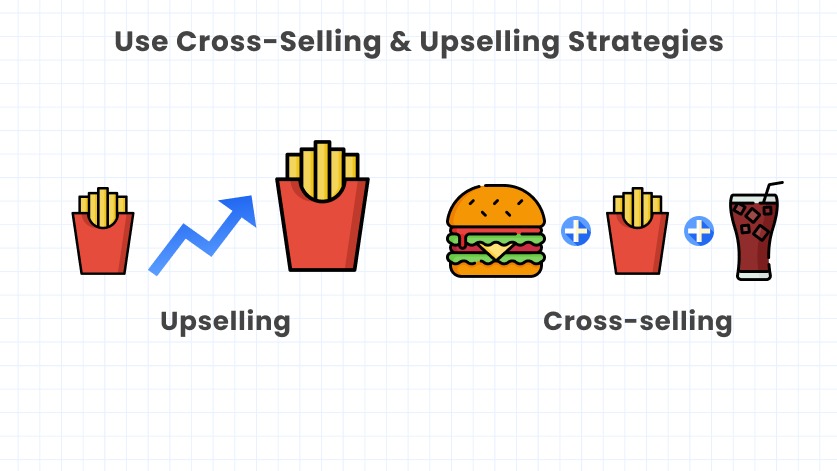
Are you looking for ways to increase Shopify sales on your store? Then you should consider using cross-selling and upselling strategies.
- Cross-selling is when you sell related products to what your customer is already buying. For example, you could cross-sell socks or shoelaces if you sell shoes.
- Upselling is when you offer a more expensive version of the product your customer is buying. For example, if someone buys a pair of shoes, you could upsell them for a higher-end pair.
Both of these strategies can effectively increase sales in your store. So if you’re looking for ways to increase Shopify sales, be sure to give cross-selling and upselling a try.
And one tool that can help you with this is the AIOD – All Automatic Discount app. This app helps you create automatic discounts and offers based on various conditions.
For example: You can offer a discount to customers who purchase two or more items from your store. Or you can offer a discount to customers who spend a certain amount.
The AIOD – All Automatic Discount app is a great way to increase your Shopify sales. And it’s easy to use, so you can start upselling and cross-selling immediately. So why not give it a try?
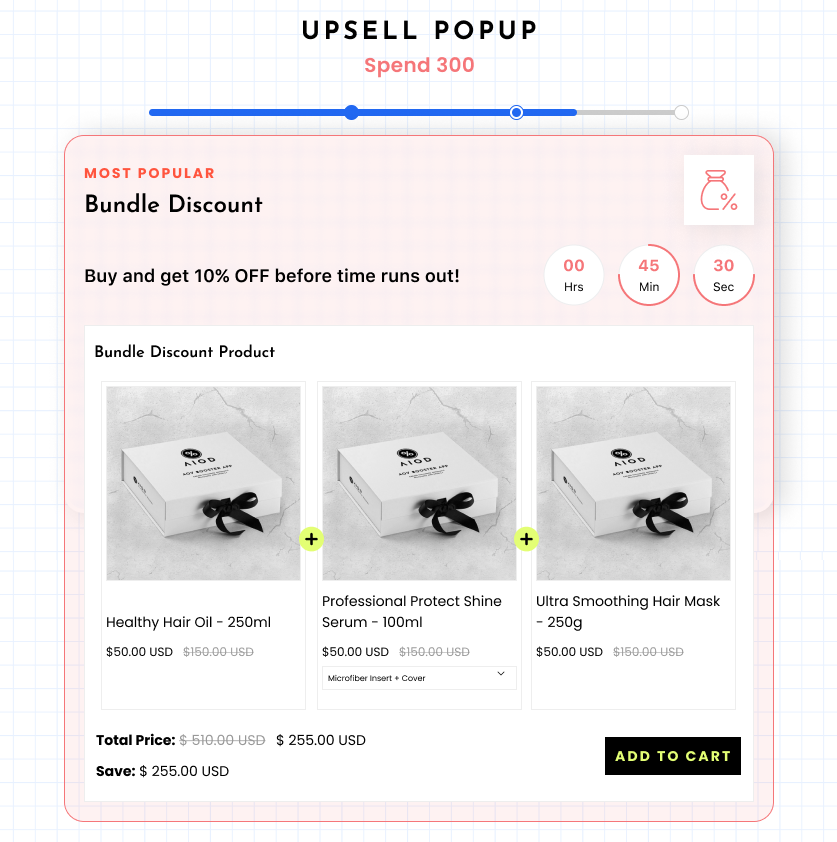
20. Sell on Multiple Platforms:
If you’re looking for ways to increase Shopify sales in your store, one of the best things you can do is to sell on multiple platforms. By diversifying your Shopify sales channels, you can reach a wider audience and tap into new markets.
Not to mention, selling on multiple platforms can help you build brand awareness and create a more consistent income stream. The good news is that Shopify makes it easy to sell on multiple platforms.
With Shopify’s built-in multichannel selling features, you can quickly and easily list your products on various sales channels, including your website, online marketplaces, social media, and brick-and-mortar stores.
21. Using Customer-Generated Content:
Generating user-generated content (UGC) can be a great way to promote your store and drive more Shopify sales. UGC is any content your customers create, such as product reviews, testimonials, photos, and videos.
You can generate UGC for your Shopify store in a few different ways. You can run contests, offer discounts for customers who leave reviews, or simply ask your customers to submit their photos and videos with your product.
Once you have some UGC, you can start promoting it on your social media channels, website, or Shopify store. Make sure to showcase your UGC in a visually appealing way and easy for customers to find.
Using UGC is a great way to build trust with potential customers and show that your product is loved by those who have already purchased it.
22. Content Management:
The owners of Shopify stores have to juggle a lot of balls – product development, marketing, shipping, customer service, and more. It’s a lot to keep track of, and letting some balls drop is easy.
But if you want to increase sales in your Store store, you need to make sure that content is one of the balls you’re always keeping an eye on.
Your store’s content includes everything from your product descriptions to your blog posts to your social media posts. And it’s not enough to just have good content – you need great content.
Content that is well-written, informative, and engaging. Content that sells. If you want to increase sales in your store, start by ensuring that your content is top-notch.
23. Add Trust Signals:
Trust is the first principle of conversion
Adding trust signals to your store can help increase Shopify sales by building trust and credibility with potential customers. Money-back guarantees, customer reviews, and social proof are all great ways to do this.
Adding these elements to your store can help increase your conversion rate and Shopify sales.
Here are a few tips on how to add trust signals to your Shopify store:
- Add Money-back Guarantees: Offering a money-back guarantee is a great way to build trust with potential customers. This type of guarantee shows that you’re confident in your product and that you’re willing to stand behind it. It can help increase conversion rates and Shopify sales.
- Customer Reviews: Customer reviews can be extremely helpful in swaying potential buyers to make a purchase. If you have positive reviews from past customers, showcase them prominently on your product pages.
- Return/Refund Policies: Another key Shopify sales driver has a strong return/refund policy. It instills confidence in potential buyers that they can purchase without risk. They know they can easily return the item for a full refund if something goes wrong.
- Be consistent with a brand’s communication and its values: JD Graffam recommended that, as a business grows, it must invest in internal communications around its brands and values.
- “A growing team must know what the business stands for, otherwise they won’t consistently represent it,” he warns. “It doesn’t matter whether you’re a designer, customer support person, marketing specialist, developer, or contractor—everyone on the team needs to know what the brand stands for, so they can treat the customers consistently. Consistency over time is the key to earning trust.
Consistency over time is the key to earning trust
– JD Graffam, UX expert
- Logos of Credit Card Processors: Make sure your Shopify store has prominently displayed logos of popular credit card processors. It will help put potential customers at ease, knowing that their preferred payment method is accepted.
Consider adding the logos of major credit card processors to your:
- Homepage
- Product pages
- Checkout page
You can sign up for a Shopify Payments account if you don’t currently accept credit cards on your Shopify store. With Shopify Payments, you can accept all major credit and debit cards and popular alternative payment methods like Apple Pay, Google Pay, and Shop Pay.
24. Improve Website Navigation:
Improving your website navigation can help increase Shopify sales on your store. Customers should be able to find what they are looking for quickly and easily on your website. If they can’t, they will likely leave without purchasing.
Here are a few tips to improve website navigation in your store:
- Use clear and descriptive labels for your menus
- Use drop-down menus to reveal more options
- Add a search bar so customers can find specific products
- Use breadcrumb navigation to help customers keep track of their location
- Organize your products into categories
25. Quick Checkout Process:
Making it easy for customers to checkout is one of the most important things you can do to increase Shopify sales in your store. A quick and easy checkout process can encourage customers to complete their purchases and make it more likely that they’ll return to your store in the future.
You can do a few things to streamline the checkout process on your Shopify store.
- First, make sure you’re offering various payment options so that customers can choose the one that’s most convenient for them.
- You can also offer customer support during the checkout process if they have questions or need help completing their purchase.
- Finally, ensure your checkout page is optimized for mobile devices so customers can easily purchase your products.
26. A/B Testing:

A/B testing is a powerful tool that can help you increase Shopify sales on your store. By testing different elements in your store, you can figure out what works best for your customers and make changes that drive more Shopify sales.
Here are a few tips to get started with A/B testing:
- Test one element at a time. Trying to test too many things at once will make it difficult to determine what is causing any changes in Shopify sales.
- Start with your most important pages. Which pages on your store are most important for increasing Shopify sales? These are the pages you should focus on testing first.
- Make small changes. Don’t make radical changes to your store all at once. Start with small changes and see how they impact Shopify sales.
- Use data to make decisions.
Increasing sales for your online store needs continuous attention
To maintain and increase Shopify sales for your store, you must continuously invest time, energy, and resources into marketing and promotions. There is no set-it-and-forget-it solution for increasing Shopify sales.
You must constantly look for new ways to reach your target audience and promote your products or services.
Luckily, as stated above, you can use several marketing channels to reach your target audience. You can use social media, email marketing, content marketing, and even paid advertising to reach new customers and increase Shopify sales.
It’s important to experiment with different marketing strategies and find what works best for your business. But even more important is to be consistent with your marketing efforts. The more you invest in marketing, the more likely you will see a return in increased sales.
Shopify Apps to Increase Sales of your Shopify Store:
1. AIOD – All Automatic Discount:
AIOD – All Automatic Discount app is the perfect app for merchants and customers looking to maximize profits. By offering multiple discounts at the same time and bundling products, merchants can increase the likelihood of customers purchasing multiple items, leading to increased Shopify sales and higher profits.
This app offers all discount features under a single umbrella, so you don’t have separate apps for different discounts.
With AIOD – All Automatic Discount, you can manage Bundle + Volume + Wholesale/General + Free Gift + BOGO + Cart Conditional + Post Purchase/Aftersell + Upsell + Cross Sell Discounts offers together seamlessly and efficiently.
Pricing & Plans:
- Basic Shopify Plan: $9.99/month
- Shopify Plan: $14.99/month
- Advanced Shopify: $24.99/month
- Shopify Plus: $49.99/month
2. ShipZip: Shipping & Delivery:
ShipZip provides a comprehensive all-in-one shipping solution with flexible rules based on products, zip codes, postcodes, and delivery dates. Our app allows you to easily manage orders on the order listing page and includes a calendar with order status.
The shipping rate can be adjusted for the same day, tomorrow, or the day after delivery days, and unlimited locations can be created and viewed on the Google MAP feature.
Our advanced capabilities include holiday/weekend settings, min/max interval days, product selection, zip code restrictions, limit orders per day, order tagging and conditions, and more.
The features of this app are designed to support carrier-calculated shipping setups.
So, if you are looking for a comprehensive shipping and delivery app for your Shopify store then ShipZip is your go-to Shopify app.
Pricing & Plans:
- Set Up: Free
- Shipping: $9.99/month
- Delivery Date: $14.99/month
- Shipping With Date: $24.99/month
3. Payfy: Payment Rules:
One of the best Shopify apps for customizing payment methods is Payfy: Payment Rules. This powerful app allows businesses to manage and control their customers’ payment methods during the checkout process.
Shopify merchants can hide payment methods by total, digital product, customer tag, and B2B customers.
Pricing & Plans:
- Free: Free for development store
- Unlimited: $3.99/month
Conclusion:
There are many proven strategies to increase Shopify sales in a store. In this article, we discussed 25 of the most effective techniques.
If you implement even a few of these methods, you should see a significant increase in your Shopify sales.
If you have any further questions, leave them in the comments, and we will reply as soon as possible.
